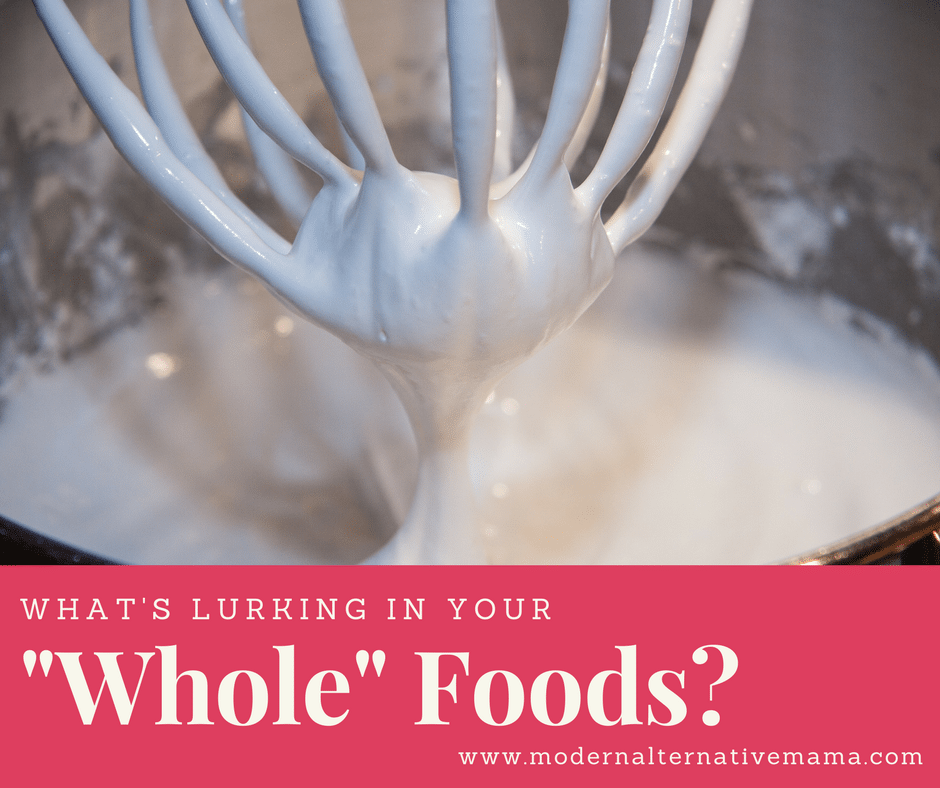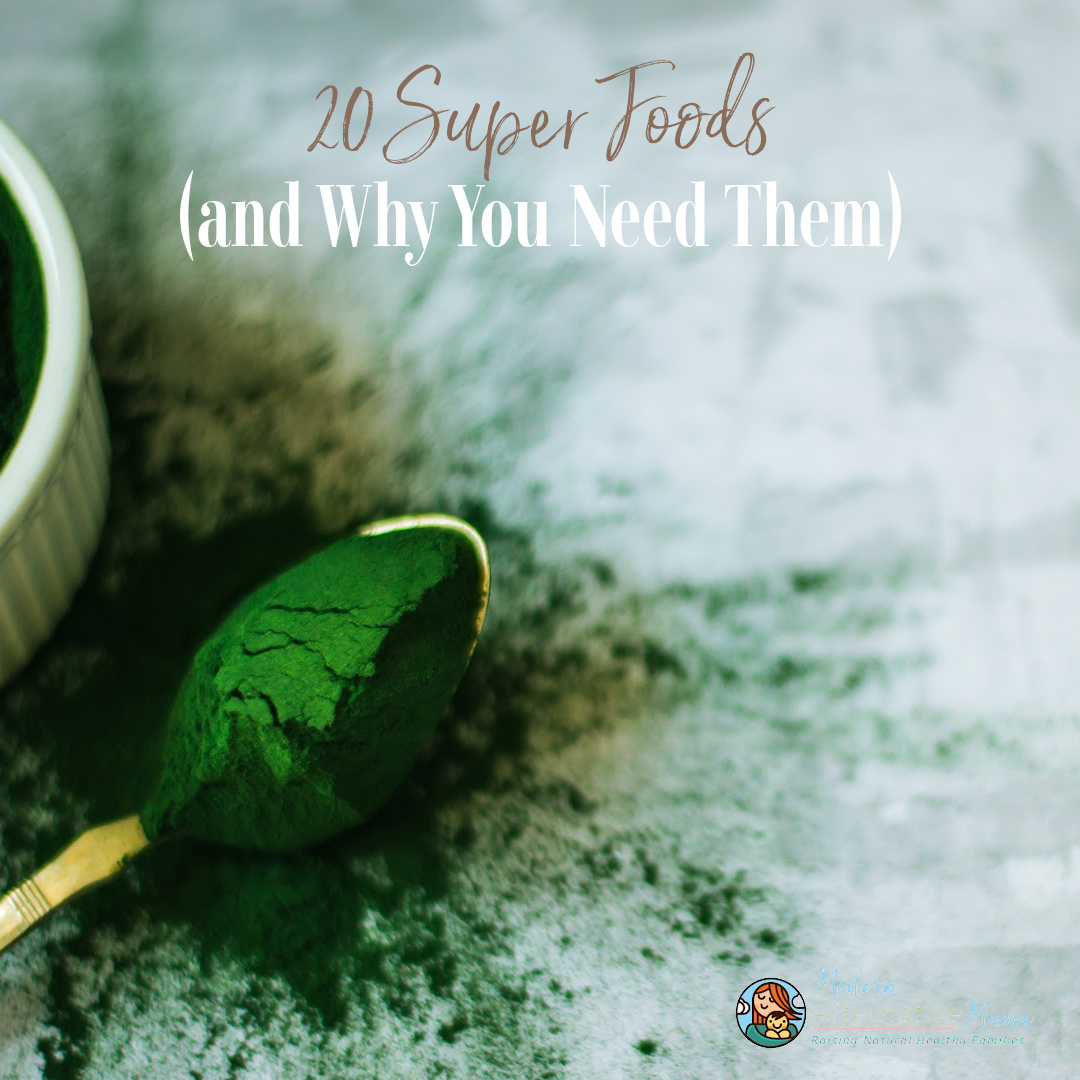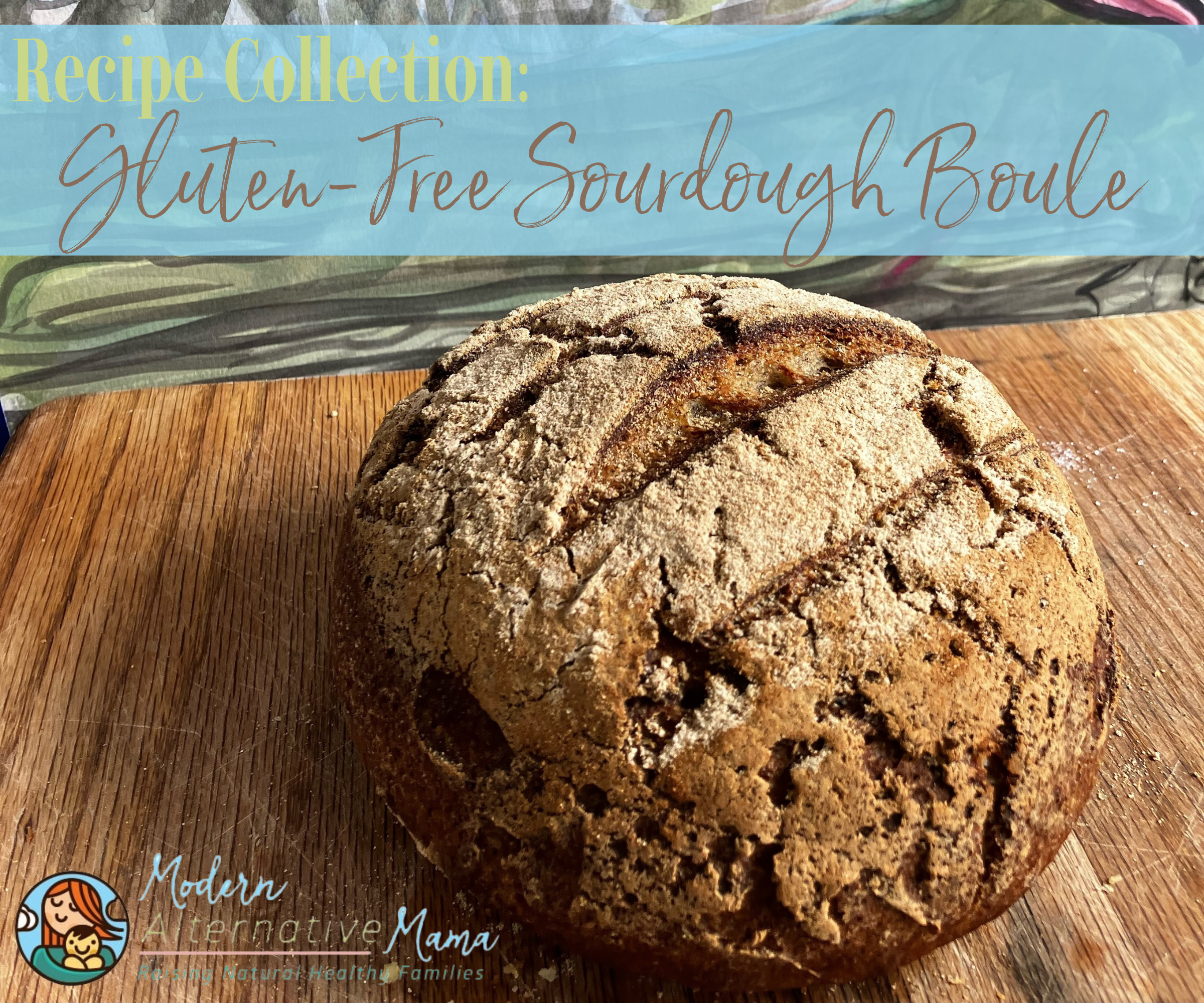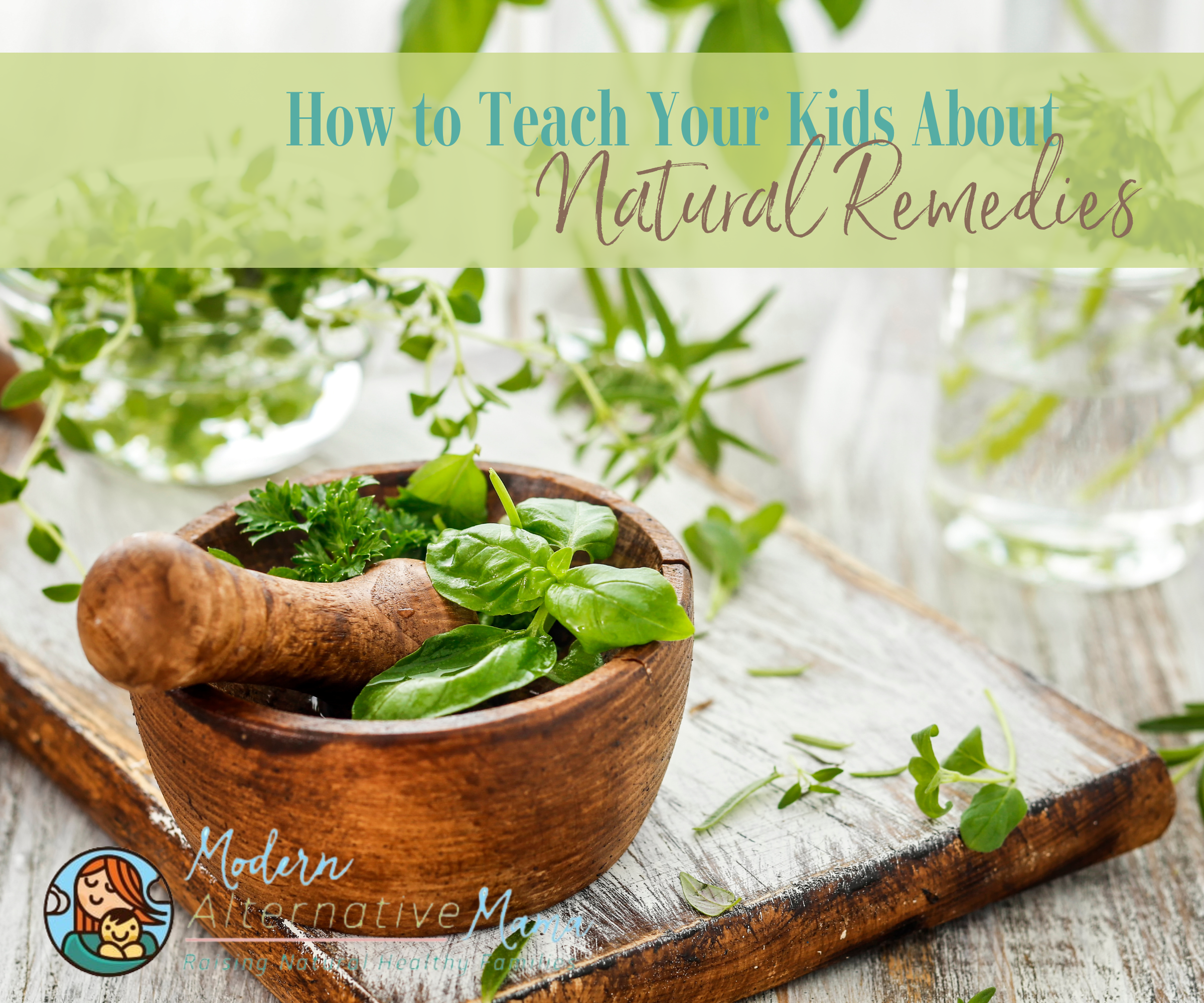A few weeks ago, I got a craving for ice cream. It was near my daughter’s birthday, so I decided to pick up some heavy cream and some raspberries, to make a special treat. The intention was to make vanilla ice cream with a fudge stripe and raspberry puree.
The first night I had it, I decided to make some whipped cream to top something quickly. I pulled the container of organic cream out of the fridge and read the label: cream, sodium citrate, and carrageenan.
Dubious of this “cream” that had added ingredients (not to mention surprised and displeased to find “organic, healthy” cream with these additives!), I poured it into a bowl. The cream was very white — not yellowish, as it should have been. It was thinner than real cream, with an odd sort of texture. I began to whip it. It took quite awhile to do, and I stopped several times, wondering if it would whip at all! I whip natural cream all the time and this was not behaving normally.
Eventually, it did whip, and I got whatever treat I had planned. But I paid for it with a headache that lasted all the next day — not common for me. This experience got me thinking: how many people are aware of the additives that have been sneaking into “whole” foods over the last several months?
Additives Newly Added to “Whole” Foods
If you didn’t know, the way manufacturers have been making certain foods has changed recently. Foods that may have been on your “safe” list may no longer be safe. For example, you may notice:
- Natural flavors in butter
- Carrageenan and mono- and diglycerides in whipping cream
- Soy flour and soy lecithin in bread
- Cornstarch and corn syrup in pretzels (and other foods)
Why? We don’t really know, exactly. But there are some theories.
Proprietary and Consistent Flavors
In some cases, manufacturers may be looking to create proprietary flavors. This is done using “natural flavors.” Natural flavors are derived from the food itself, and by processing the food and using these natural flavors, companies can create a product that has a uniform flavor all the time. This means that, for example, a company can produce orange juice that always tastes identical, yet different from a competitor’s brand. This is true even if they do not list the process on the label (like for products that list only “100% orange juice, not from concentrate”). Of course, this is so that consumers will prefer one brand over another, creating brand loyalty.
Make Food Cheaper to Produce
Some of the manufacturers are probably trying to keep costs down. Some of these whole foods — like cream — are really expensive. Rather than selling them as-is, they stretch them with the addition of carrageenan or mono- and diglycerides. Or, companies add soy flour to their bread to stretch wheat flour further. Anything that’s made from corn or soy is going to be cheap because it’s subsidized (yes, to an extent — even organic).
Preserve Food Longer
Keeping fresh, whole food in a ‘fresh’ state and shipping it around the country isn’t easy — and in some cases, isn’t even possible. They could drive up costs to try to do it, which would involve packaging and shipping very quickly and more frequently, plus dealing with some spoilage that occurs. Instead, they preserve the foods by taking extra steps like ultra-pasteurizing milk (which makes it shelf stable for months), or adding additional preservatives. The longer food can sit on a shelf and be “safe” before being sold, the less frequently they have to ship, the less likely they’ll face product loss due to spoilage, and the more profits they can make.
What Can We Do?
You may be wondering what we can do about this issue. Well, honestly, there are several things!
Read The Labels
First, always read the label. Even if it is a product you have bought before, glance at the label before putting it in your cart next time. Manufacturers make small changes all the time. For example, they may swap olive oil for soybean oil without “telling” you — except for the ingredients list change on the label. And don’t trust the ‘allergen statement’ either. Sometimes they will declare no soy, but there will be an additive made from soy. Plus, corn and other allergens that don’t make the “top 8” are not required to be listed on the allergen statement. Read the full ingredients list each time you buy and put it back if it contains an ingredient you don’t want.
Choose Local
Where possible, choose to buy local and fresh. If it’s not shipping long distances and comes from a place that is committed to quality, you are more likely to get a safe product. This does not mean you have to go straight to farms (necessarily). We have several local brands of dairy, kombucha, snack foods, etc. that are available in many grocery stores in the area. I know that the local brand of cream and milk is safe and healthy. Of course, going straight to farms is a great idea, where available and affordable.
Complain to Companies
If there’s a product that you love, but which has recently changed their ingredients to include something you don’t prefer, let them know! Or if there’s a new product you run across that’s awesome *except* for one or two ingredients, let them know. Be nice about it, but send them an email or post a comment to their Facebook page and express your disappointment.
For example, you may say: I just picked up a bag of your snack food today. I used to love it, but I noticed you’ve changed the ingredients and it now includes corn syrup! I’m very disappointed to see that, because I prefer not to buy products with corn syrup, and will not buy yours anymore. Please remove the corn syrup from your product — I would love to be able to buy it again! A respectful letter is more likely to get a positive response than a negative one. And if companies receive enough complaints, they may just make a change!
Start a Petition
If there is a particular product or ingredient that is popular yet dangerous, it may be time to start a petition. Many companies have recently given in to this type of pressure from major food bloggers, and have agreed to remove certain ingredients from their products. Most notably, Kraft has agreed to produce certain varieties of macaroni and cheese without artificial food dyes, and Subway has agreed to remove azodicarbonamide from their bread. Are there any products that you would like to see changes in? I’d love to help…. 🙂
Thank Companies
Contacting companies goes both ways. If you have a product that you love, with excellent ingredients, take time to thank the company! Send them an email or post to their Facebook page and tell them how much you love that they are producing a safe, healthy product for you and your family, and how you appreciate their commitment to quality, safe ingredients. This will encourage them not to make a change to a cheaper method of production.
Why This Matters
A few people suggested that we shouldn’t worry about these types of changes, because people should just be committed to buying local or buying clean, no matter what. A few bragged about how they only eat foods with 5 ingredients or less, or only what they grow themselves, or only the highest quality organics. That’s really great for those who can do that. But not everyone is able to do that.
Some people can’t afford “the best” (and can’t change their budget to make it work). Some people aren’t sure what they need to avoid. Others do not have other options in their area. We need to care about these people, where they are. It’s no help to them to admonish them to “just buy better food.” That may not be possible. They may be overwhelmed by sorting through all the information out there. And they deserve access to safe food as much as anyone else does. Let’s help each other out and make some positive changes to our food!
Have you been surprised by ingredient changes on some of your favorite foods?
SaveSave








Whipping cream got me too! Come on it is CREAM how can they mess that up? Never stop reading labels! And searching out local resources!
So mad about the whip cream same thing happened to me.
yes!!! The Wild Harvest brand “pasture butter” that I used to get from Albertsons now no longer say’s “pasture butter”, says where it comes from (used to say Wisconsin on it), “natural flavors” suddenly appeared on the ingredient list, and the butter is WHITE, it used to be a pretty yellow! I am beyond disappointed! Worst is that now that I need to switch brands of butter, my local Albertsons and Costco no longer have Kerrygold butter! I do not know what to do 🙁 I can not afford to pay $8 a pound for pasture butter from Azure Standard, which seems to be my only other option at this point. If you have any suggestions I’d love to hear them 🙁
I know it drives me crazy. I have a daughter with a soy allergy so I have to read all labels carefully. It’s amazing how much unhealthy stuff is hidden in our foods.
At whole foods the other day I was buying my mom some root beer and I noticed it has “caramel color” in the ingredient list. I was shocked to see food coloring in anything at whole foods.